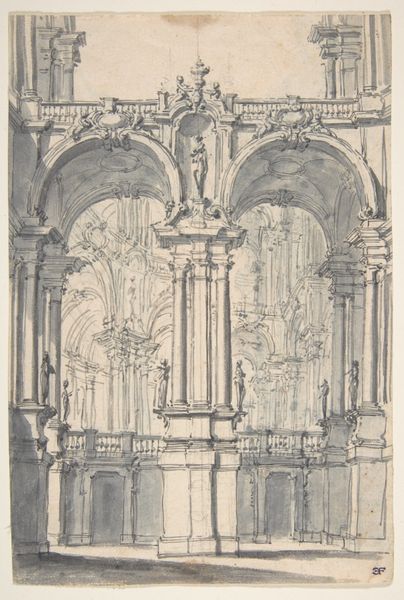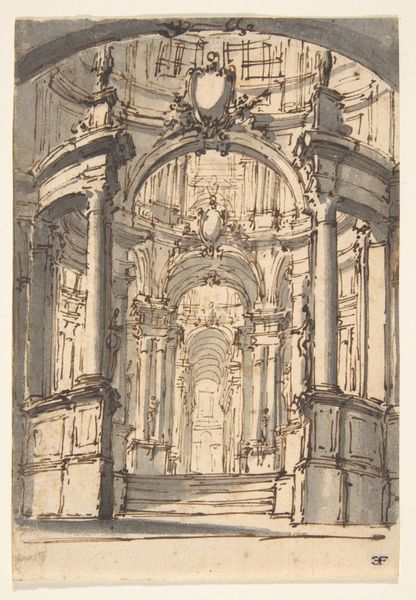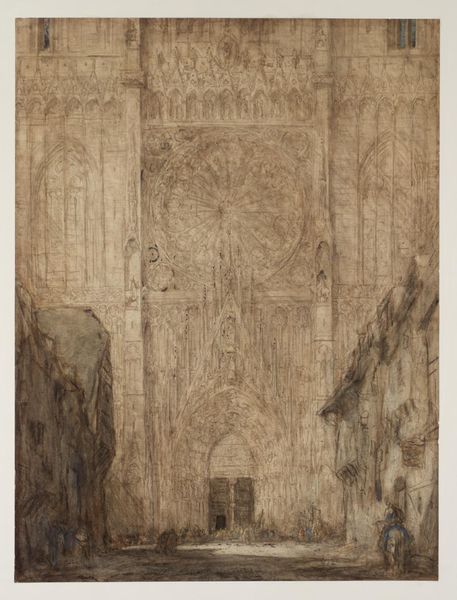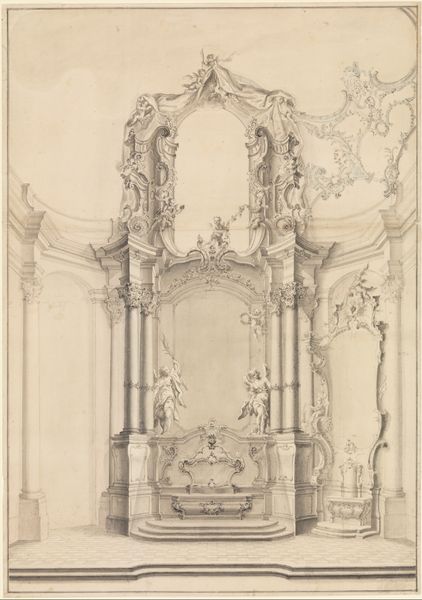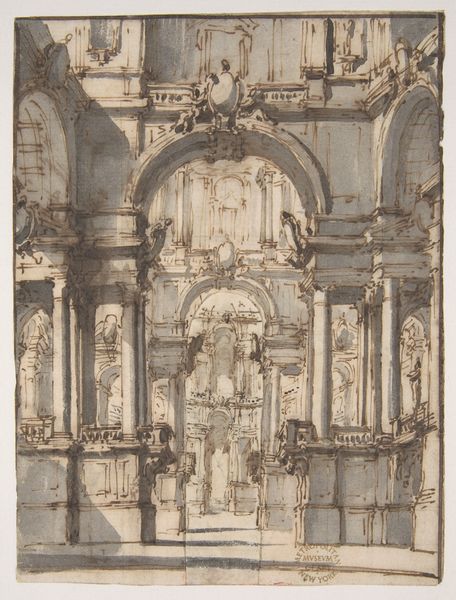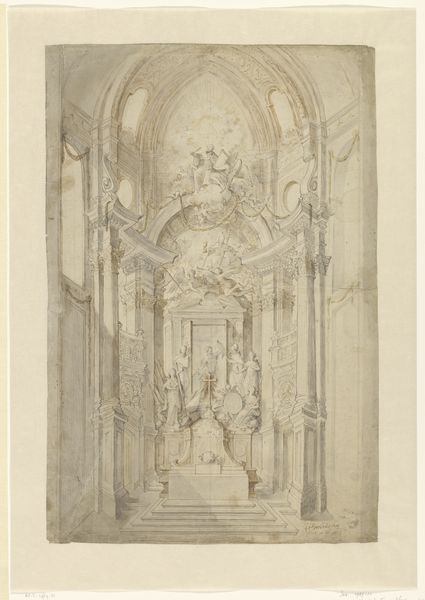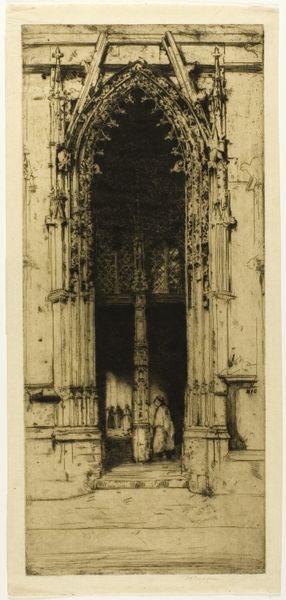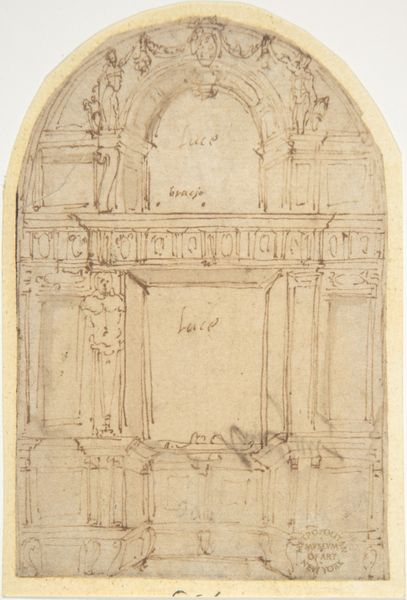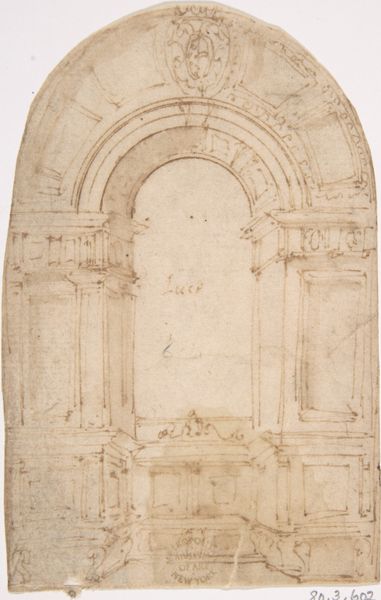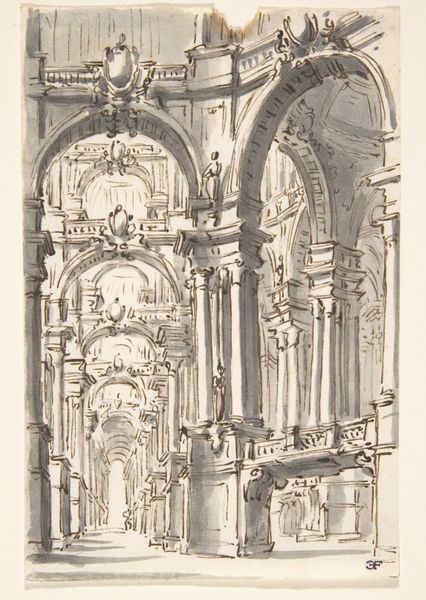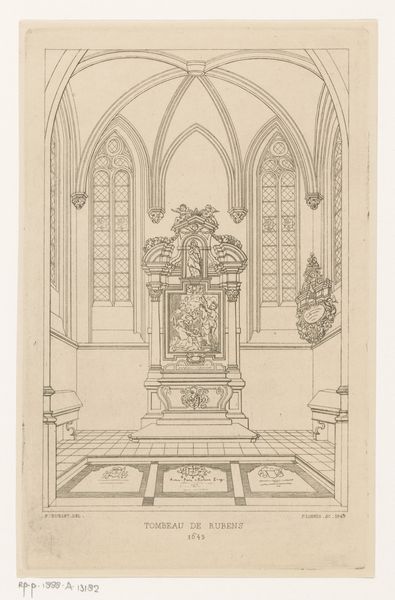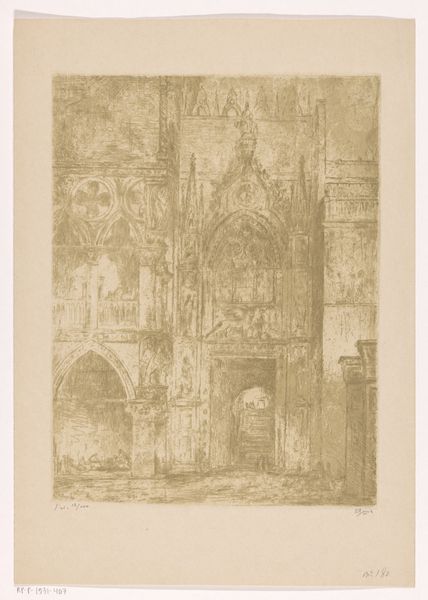
Design for a Stage Set (recto); Fragmentary Sketch of a Plan (verso) 1698 - 1765
0:00
0:00
drawing, ink, architecture
#
drawing
#
baroque
#
ink painting
#
charcoal drawing
#
ink
#
history-painting
#
architecture
Dimensions: 5 5/16 x 4 in. (13.5 x 10.2 cm)
Copyright: Public Domain
Curator: Here we have Giovanni Battista Natali's "Design for a Stage Set (recto); Fragmentary Sketch of a Plan (verso)", dating from about 1698 to 1765. It's an ink and charcoal drawing, a fairly quick sketch, now held at the Metropolitan Museum of Art. Editor: My first impression is one of receding grandeur, a somewhat somber and imposing space, despite it being a preliminary drawing. The archways create this relentless tunnel vision toward… well, toward a vanishing point and barely suggested doorway. Curator: Absolutely. Consider the context in which Natali was working. The Baroque era was obsessed with the theatrical, both in life and art. Stage design was a significant art form, and designers were expected to create spaces that conveyed power, drama, and often religious or political ideologies. These designs served the purpose of transporting audiences, especially those frequenting spaces of power like the courts. Editor: The architectural symbolism is layered. Arches, obviously, denote triumph and authority, but also the passage from one state to another. What intrigues me is the repetition – the diminishing arches create a sense of infinite potential, but also of being dwarfed, swallowed by the architecture. Curator: And that's precisely the tension the Baroque artist sought to create: humanity's place in a divine or monarchical order. The architecture dominates, and any figures—we see tiny suggested forms of humans on plinths along the columns—are subservient. But note, also, how theatrical backdrops often reinforce the illusion of space, constructing power dynamics. Editor: I’m struck by how modern it feels, actually. Thinking about Foucauldian power structures and surveillance. This design anticipates those discussions. You could easily stage something by Pinter or Beckett within this space. The sketch, though seemingly historical, has a timeless quality because of the use of visual ideas linked to authority and perspective. Curator: It's that intersection of the historical and the contemporary that keeps this drawing relevant. We see Baroque aesthetics grappling with themes that still resonate: the individual versus the institution, the seen and the unseen mechanisms of control, and the power of visual representation to shape reality. Editor: It makes you question what power has authority over whom. Curator: Indeed. Perhaps in the verso we can glimpse more, yet it’s just a sketch, never finished. Editor: An unending question then, about what constitutes meaning. Thank you for the enlightenment.
Comments
No comments
Be the first to comment and join the conversation on the ultimate creative platform.
